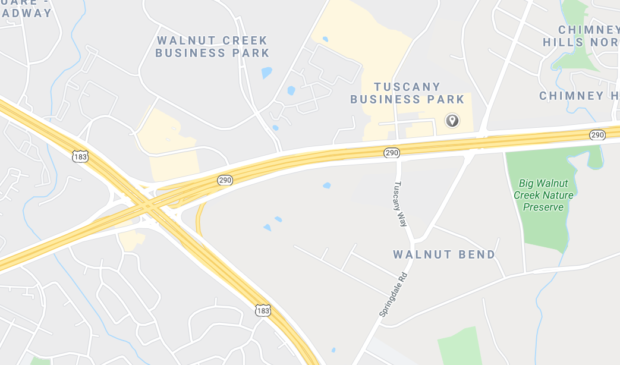Newsletter Signup
The Austin Monitor thanks its sponsors. Become one.
Most Popular Stories
- Parks Board recommends vendor for Zilker Café, while voicing concerns about lack of local presence
- City leaders evaluate surprising ideas for water conservation
- Office slowdown sparks new downtown housing ambitions
- Audit: Economic official granted arts, music funding against city code
- Downtown Historic Resource Survey eyes seven new districts eligible for designation
-
Discover News By District
Popular Whispers
Sorry. No data so far.

Despite public opposition, plan for directing school traffic gains ZAP approval
Tuesday, January 14, 2020 by Jessi Devenyns
Many factors go into the planning of schools, and chief among them is safety. Concern over whether a children’s educational facility belonged in an industrial park spurred a discussion about the appropriate zoning choice for the site at the Jan. 7 meeting of the Zoning and Platting Commission.
Dave Anderson from the Drenner Group told ZAP that when planning for the next school to be housed at 9100 U.S. Highway 290 East, the applicant chose to use the “worst-case scenario” as a benchmark.
For 15 years, the site at U.S. 290 housed a trade school before it closed 10 months ago. To replace the school, the property owner of the parcel requested a zoning change from Limited Industrial Services (LI) with a conditional overlay to General Commercial Services (CS) with a new conditional overlay preventing 46 uses but permitting schools. This zoning change will allow a private, public, charter or trade school to use the building.
Even with concerns from neighboring businesses about the effect increased traffic will have on safety and vehicle patterns within the Tuscany Business Park, the commission voted 10-0-1 to recommend the zoning change. Commissioner Ann Denkler abstained from the vote.
Anderson said at present there is no decision on what type of school will be housed on the site; however, the applicant conducted the traffic impact analysis using a K-12 charter school as a basis for future traffic patterns. With the expectation of a 90-minute pickup and drop-off period twice a day each weekday, Anderson explained that estimating the traffic generated by 900 students offers an idea of the maximum traffic the site can handle.
The site of the future educational facility is in a shared industrial business park that is accessible from five driveways. One of these businesses is Inland Truck Parts Company, where employees are opposed to the zoning change. “There are some significant differences in a trade school and a K-12 school,” said Michael Pollard, an architect with the company. “My biggest concern is over safety.”
His concerns were not exclusive to the charter school, but for any school on the site. In a letter to the city, Pollard said that the previous technical school, which enrolled students college-age or older, already had “student traffic driving too fast through our front parking lot putting our customers and employees at risk. … In our opinion, this problem will only be magnified with the introduction of younger, high school-aged drivers.” The company installed speed bumps in the parking lot to help slow down cars along the planned route for school traffic.
That route, according to Pollard, is through Inland Truck Parts’ most heavily used entrance and will also block the use of the two sites’ shared parking lot with the addition of over 1,000 daily trips. The city’s traffic analysis identifies the morning drop-off period as the peak point for traffic congestion, with 1,019 trips.
Anderson said that while the current traffic management plan provides 3,300 linear feet of queueing lane, there is little likelihood that the full length of the line will be used. Furthermore, the traffic management plan accounts for the shared space within the Tuscany Business Park and provides for staff supervision and physical barriers to prevent cars from traveling outside of the prescribed path that uses one driveway.
“I think you’ve got a good solution to a difficult problem,” said Commissioner Jim Duncan, who applauded the traffic management design. “This is probably one of the best solutions I’ve seen anywhere.”
Commissioner Denkler pointed out that for a grade school, foot traffic is just as much a concern as vehicle traffic. “If you’ve got high school students, you will have people walking out to the parking lot,” she pointed out.
Anderson agreed there will be foot traffic on the campus. However, he said that parking for students and faculty will be contained to the tract with the building and will not spill over into the shared parking lot. The proposed 900-student school, he said, is smaller than the trade school. At its peak enrollment, the prior trade school had 1,168 students.
With confidence in the “worst-case scenario” plans to minimize traffic conflicts within the business park and alongside U.S. 290, the commission voted to recommend the rezoning of the 7.3-acre property.
The Austin Monitor’s work is made possible by donations from the community. Though our reporting covers donors from time to time, we are careful to keep business and editorial efforts separate while maintaining transparency. A complete list of donors is available here, and our code of ethics is explained here.
You're a community leader
And we’re honored you look to us for serious, in-depth news. You know a strong community needs local and dedicated watchdog reporting. We’re here for you and that won’t change. Now will you take the powerful next step and support our nonprofit news organization?


